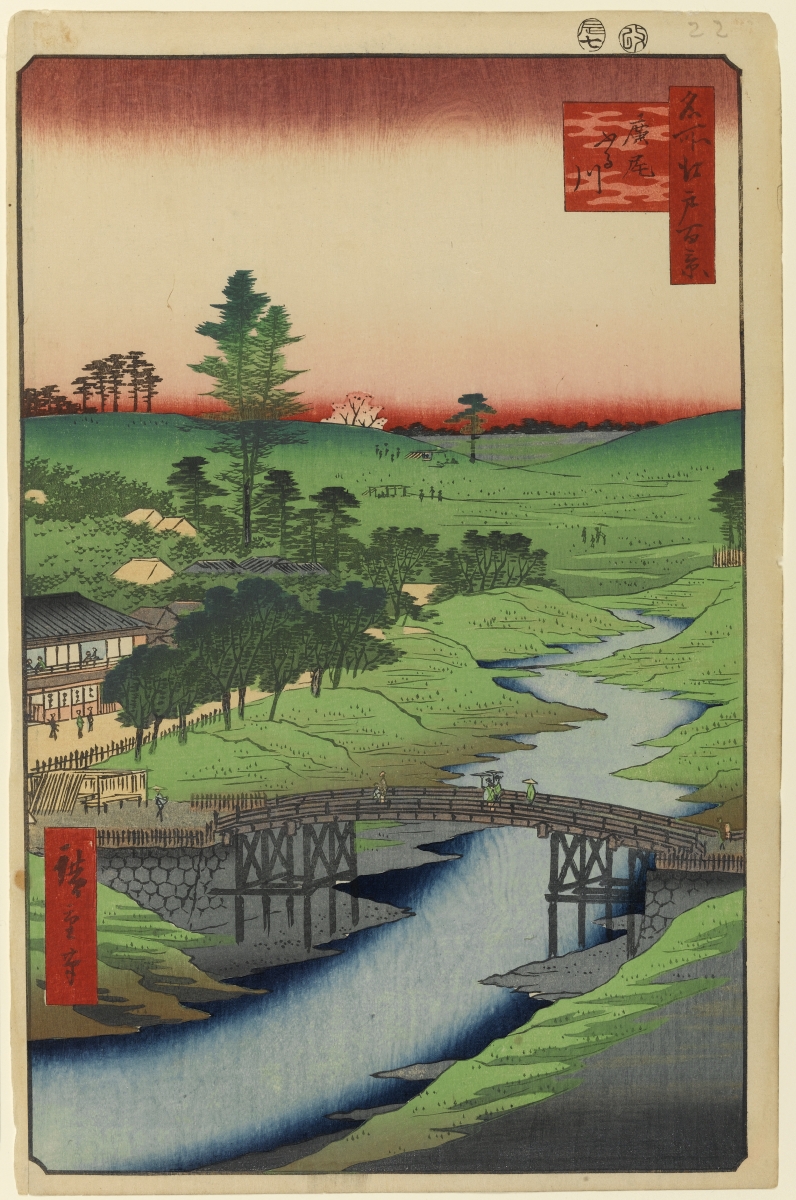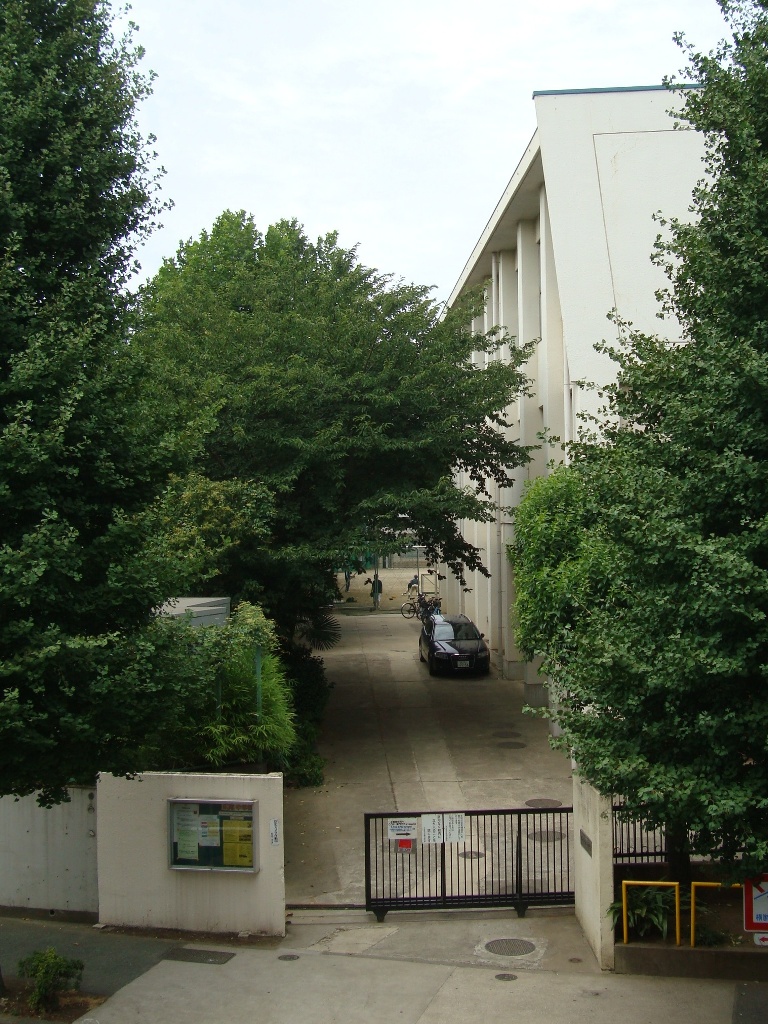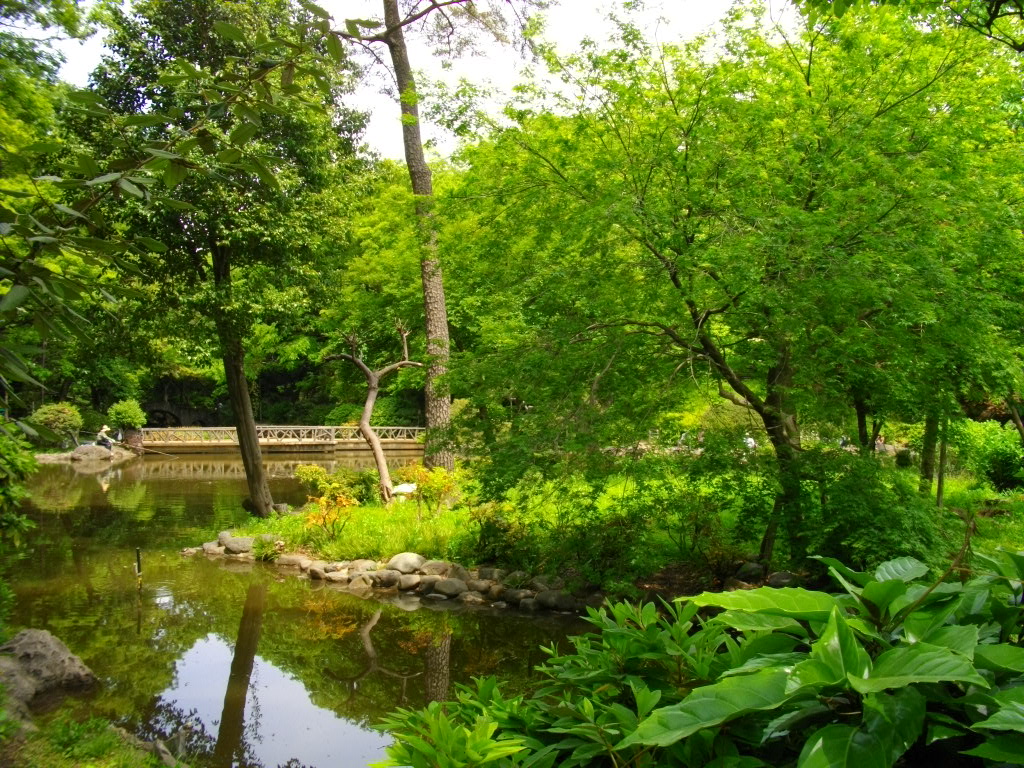Hiroo, Shibuya on:
[Wikipedia]
[Google]
[Amazon]
 is a district of Shibuya, Tokyo, Japan. Abutting Ebisu,
is a district of Shibuya, Tokyo, Japan. Abutting Ebisu,
 operates public elementary and junior high schools.
Hiroo 1- chome 1-8 and 11-16 ban, 2-chome 1-9 ban, and 3-chome 2-3 and 8-17 ban are zoned to Hiroo Elementary School ( 広尾小学校). Hiroo 4-5 chome, 1-chome 9-10 ban, and 2-chome 10-22 ban are zoned to Rinsen Elementary School ( 臨川小学校). Hiroo 3-chome 1 and 4-7-ban are zoned to Tokiwamatsu Elementary School ( 常磐松小学校).
Hiroo 1-2 and 4-5 chome and 3-chome 2, 3, and 8-17 ban are zoned to Hiroo Junior High School ( 広尾中学校). Hiroo 3-chome 1 and 4-7 ban are zoned to Hachiyama Junior High School ( 鉢山中学校). - Has junior high school zoning
Schools in Hiroo:
* Hiroo Elementary School (''Hiroo Shōgakkō'')
* Rinsen Elementary School, a public elementary school.
* Tokyo Jogakkan Elementary, Junior and Senior High School, a private girls school.
* Keio Gijyuku Yōchisha, a private elementary school, affiliated with Keio University. It is located in Tengenji Bridge (Tengenji-Bashi).
* Hiroo is also home to the
operates public elementary and junior high schools.
Hiroo 1- chome 1-8 and 11-16 ban, 2-chome 1-9 ban, and 3-chome 2-3 and 8-17 ban are zoned to Hiroo Elementary School ( 広尾小学校). Hiroo 4-5 chome, 1-chome 9-10 ban, and 2-chome 10-22 ban are zoned to Rinsen Elementary School ( 臨川小学校). Hiroo 3-chome 1 and 4-7-ban are zoned to Tokiwamatsu Elementary School ( 常磐松小学校).
Hiroo 1-2 and 4-5 chome and 3-chome 2, 3, and 8-17 ban are zoned to Hiroo Junior High School ( 広尾中学校). Hiroo 3-chome 1 and 4-7 ban are zoned to Hachiyama Junior High School ( 鉢山中学校). - Has junior high school zoning
Schools in Hiroo:
* Hiroo Elementary School (''Hiroo Shōgakkō'')
* Rinsen Elementary School, a public elementary school.
* Tokyo Jogakkan Elementary, Junior and Senior High School, a private girls school.
* Keio Gijyuku Yōchisha, a private elementary school, affiliated with Keio University. It is located in Tengenji Bridge (Tengenji-Bashi).
* Hiroo is also home to the
広尾小学校-2.JPG, Hiroo Elementary School ( 広尾小学校)
臨川小学校-1.JPG, Rinsen Elementary School ( 臨川小学校)
 Adjacent to Hiroo, the district of
Adjacent to Hiroo, the district of
 The New Sanno Hotel is a short-term accommodation facility operated by the U.S. Navy. While the hotel technically is located in
The New Sanno Hotel is a short-term accommodation facility operated by the U.S. Navy. While the hotel technically is located in

 Tengenji Bridge (天現寺橋) is located at the intersection of Gaien-Nishi-dori and Meiji-dori in Hiroo 5-chome. The bridge spans the confluence of the
Tengenji Bridge (天現寺橋) is located at the intersection of Gaien-Nishi-dori and Meiji-dori in Hiroo 5-chome. The bridge spans the confluence of the


 *
*
 is a district of Shibuya, Tokyo, Japan. Abutting Ebisu,
is a district of Shibuya, Tokyo, Japan. Abutting Ebisu, Minami-Azabu
is a district of Minato, Tokyo, Japan. Literally meaning "Southern Azabu", Minami-Azabu was named so because it was situated in the southern portion of the former Azabu Ward.
The area's postal code is 106–0047.
Tokyo Metropolitan Central Libr ...
, Nishi-Azabu and Minami-Aoyama, Hiroo is an upmarket residential and shopping neighborhood in central Tokyo.
As of October, 2020, the population of this district is 15,263. The postal code for Hiroo is 150-0012.
According to the Ministry of Land, Infrastructure and Transport, as of 2020, the residential land prices on Hiroo 2-chōme and 3-chōme are as high as ¥1,350,000/m2 and ¥1,260,000/m2, respectively.
Located on Minami-Azabu, the Hiroo Station of Tokyo Metro Hibiya Line is the nearest subway station to Hiroo.
Geography
Hiroo is located in the southeast area of the district of Shibuya, Tokyo, Japan. The boundaries of Hiroo are Nishi-Azabu, Minato and Minami- Aoyama, Minato to the north and follows theShibuya River
The is a river which flows through central Tokyo, Japan.
The river is 2.6 km in length originating close to Shibuya Station and passing through Shibuya and Minato wards before merging with the Furu River near Hiroo and flowing into To ...
along the south. Minami-Azabu, Minato is located to the east and Higashi, Shibuya is located to the west.
Education
Tertiary education
There are two universities in Hiroo. The University of the Sacred Heart, successor to the Sacred Heart Koto Senmon School which was established in 1916 and reorganized into a university with the current name in 1948, is one of the oldest women's universities in Japan. Its important alumnae include the former UN High Commissioner for Refugees Sadako Ogata and Empress of Japan Michiko. One of the two campuses of the Japanese Red Cross College of Nursing is also located in Hiroo. Although reorganized into a four-year college recently in 1986, the origin of the nursing school dates back to 1890, when nursing education was launched at the Japanese Red Cross Hospital. The university offers education to women in Japanese.Primary and secondary schools
 operates public elementary and junior high schools.
Hiroo 1- chome 1-8 and 11-16 ban, 2-chome 1-9 ban, and 3-chome 2-3 and 8-17 ban are zoned to Hiroo Elementary School ( 広尾小学校). Hiroo 4-5 chome, 1-chome 9-10 ban, and 2-chome 10-22 ban are zoned to Rinsen Elementary School ( 臨川小学校). Hiroo 3-chome 1 and 4-7-ban are zoned to Tokiwamatsu Elementary School ( 常磐松小学校).
Hiroo 1-2 and 4-5 chome and 3-chome 2, 3, and 8-17 ban are zoned to Hiroo Junior High School ( 広尾中学校). Hiroo 3-chome 1 and 4-7 ban are zoned to Hachiyama Junior High School ( 鉢山中学校). - Has junior high school zoning
Schools in Hiroo:
* Hiroo Elementary School (''Hiroo Shōgakkō'')
* Rinsen Elementary School, a public elementary school.
* Tokyo Jogakkan Elementary, Junior and Senior High School, a private girls school.
* Keio Gijyuku Yōchisha, a private elementary school, affiliated with Keio University. It is located in Tengenji Bridge (Tengenji-Bashi).
* Hiroo is also home to the
operates public elementary and junior high schools.
Hiroo 1- chome 1-8 and 11-16 ban, 2-chome 1-9 ban, and 3-chome 2-3 and 8-17 ban are zoned to Hiroo Elementary School ( 広尾小学校). Hiroo 4-5 chome, 1-chome 9-10 ban, and 2-chome 10-22 ban are zoned to Rinsen Elementary School ( 臨川小学校). Hiroo 3-chome 1 and 4-7-ban are zoned to Tokiwamatsu Elementary School ( 常磐松小学校).
Hiroo 1-2 and 4-5 chome and 3-chome 2, 3, and 8-17 ban are zoned to Hiroo Junior High School ( 広尾中学校). Hiroo 3-chome 1 and 4-7 ban are zoned to Hachiyama Junior High School ( 鉢山中学校). - Has junior high school zoning
Schools in Hiroo:
* Hiroo Elementary School (''Hiroo Shōgakkō'')
* Rinsen Elementary School, a public elementary school.
* Tokyo Jogakkan Elementary, Junior and Senior High School, a private girls school.
* Keio Gijyuku Yōchisha, a private elementary school, affiliated with Keio University. It is located in Tengenji Bridge (Tengenji-Bashi).
* Hiroo is also home to the International School of the Sacred Heart
International School of the Sacred Heart (ISSH) is a Kindergarten (co-ed) – Grades 1–12 (all girls) school in Shibuya, Tokyo, Japan, founded in 1908. As part of the Network of Sacred Heart Schools it is affiliated with schools and institutio ...
which was founded in 1908 and is located on the same grounds as the University of the Sacred Heart (Seishin Joshi Daigaku). It offers education in English for girls from the ages of three to eighteen.
* There are several Japanese high schools in the area as well, including Hiroo Senior High School (''Hiroo Kōtōgakkō'')
* The Rainbow International Montessori School also has a facility located in the same area.
Demography
Attractions
Minami-Azabu
is a district of Minato, Tokyo, Japan. Literally meaning "Southern Azabu", Minami-Azabu was named so because it was situated in the southern portion of the former Azabu Ward.
The area's postal code is 106–0047.
Tokyo Metropolitan Central Libr ...
is home to Arisugawa Park, which spans through a large chunk of the town. The park consists of several paths and walkways, a baseball field, soccer field, children's amusement areas and a man-made waterfall that empties into a pond full of koi and ducks. The park is situated in the close vicinity of Hiroo Station, causing it to be often incorrectly regarded as "a park in Hiroo."
Foreign Embassies
Hiroo is home to several embassies: Embassy of Peru, Croatia, Czech Republic, Burkina Faso, Tajikistan, Congo, and Oman. Hiroo Station is the nearest subway station to several prominent embassies in Minato: Embassy of France, Germany, Norway, and Pakistan.New Sanno Hotel
Minami-Azabu
is a district of Minato, Tokyo, Japan. Literally meaning "Southern Azabu", Minami-Azabu was named so because it was situated in the southern portion of the former Azabu Ward.
The area's postal code is 106–0047.
Tokyo Metropolitan Central Libr ...
, it is nearby the Hiroo subway station and Tengenji Bridge. The hotel opened in 1983 after moving from a location nearby Akasaka Mitsuke Station. The large number of daily visitors to the hotel contributes to the international atmosphere in Hiroo.
Tsukushigahara
In theEdo period
The or is the period between 1603 and 1867 in the history of Japan, when Japan was under the rule of the Tokugawa shogunate and the country's 300 regional '' daimyo''. Emerging from the chaos of the Sengoku period, the Edo period was character ...
, the area near present-day Tokyo Metropolitan Hiroo Hospital
is a public hospital in Shibuya, Tokyo, Japan. It has 426 beds and is run by the Tokyo Metropolitan Government.
The hospital focuses on emergency and disaster medical care, cardiovascular diseases, cerebrovascular diseases, and care for resident ...
, Keio Gijyuku Yochisha School, Tengenji Bridge, and Tokyo Metropolitan Hiroo 5-chome Apartments was named Tsukushigahara. At the time, this area was a large flatland of susuki grass ('' miscanthus sinensis).'' Tsukushigahara was a popular strolling and play area and was recorded in the Illustrated Collection of Famous Places in Edo (江戸名所図会).

Hiroo 5-chome Shopping Street Town
The area surrounding the present-day Hiroo 5-chome shopping street town was designated a shopping street town in Shotoku 3 (1713). This area survived the destruction of theBombing of Tokyo
The was a series of firebombing air raids by the United States Army Air Force during the Pacific campaigns of World War II. Operation Meetinghouse, which was conducted on the night of 9–10 March 1945, is the single most destructive bombi ...
in 1944-1945. As a result, many Meiji period
The is an era of Japanese history that extended from October 23, 1868 to July 30, 1912.
The Meiji era was the first half of the Empire of Japan, when the Japanese people moved from being an isolated feudal society at risk of colonization ...
and Taisho period buildings can still be found in the area. The area is locally known for its nostalgic atmosphere.
Tengenji Bridge
 Tengenji Bridge (天現寺橋) is located at the intersection of Gaien-Nishi-dori and Meiji-dori in Hiroo 5-chome. The bridge spans the confluence of the
Tengenji Bridge (天現寺橋) is located at the intersection of Gaien-Nishi-dori and Meiji-dori in Hiroo 5-chome. The bridge spans the confluence of the Shibuya River
The is a river which flows through central Tokyo, Japan.
The river is 2.6 km in length originating close to Shibuya Station and passing through Shibuya and Minato wards before merging with the Furu River near Hiroo and flowing into To ...
and the Kogai River. The Kogai River flows completely underground since it was covered by concrete. The Kogai River flows under Gaien-Nishi Dori upstream towards and past the east side of Aoyama Cemetery
is a cemetery in Aoyama, Minato, Tokyo, Japan, managed by the Tokyo Metropolitan Government. The cemetery is also famous for its cherry blossoms, and at the season of hanami, which many people would visit.
History
The cemetery was origi ...
. Two springs known to still flow into the Kogai River are located at the ponds of Arisugawa Park and the ponds at the Nezu Museum. The Tengenji Bridge is an old bridge and existed long before it was mentioned in a text named Gofunaienkakuzsho (御府内沿革図書) published in Bunkyu 3 (1863).
Facilities

Tokyo Metropolitan Hiroo Hospital
is a public hospital in Shibuya, Tokyo, Japan. It has 426 beds and is run by the Tokyo Metropolitan Government.
The hospital focuses on emergency and disaster medical care, cardiovascular diseases, cerebrovascular diseases, and care for resident ...
, located in Ebisu.
* Japanese Red Cross Medical Center
The Japanese Red Cross Medical Center (JRC Medical Center) is a general hospital located in Hiroo, Shibuya-ku, Tokyo. It is the main hospital of the Japanese Red Cross Society, and is directly controlled by it. The site of Hiroo, Tokyo, where the ...
* Aiiku Hospital, located in Minami-Azabu
is a district of Minato, Tokyo, Japan. Literally meaning "Southern Azabu", Minami-Azabu was named so because it was situated in the southern portion of the former Azabu Ward.
The area's postal code is 106–0047.
Tokyo Metropolitan Central Libr ...
.
* Japanese Red Cross College of Nursing
is a private university in Hiroo, Shibuya, Tokyo, Japan with an auxiliary suburban campus in Musashino, Tokyo
is a Cities of Japan, city located in the Western Tokyo, western portion of Tokyo Metropolis, Japan. , the city had an estimated popul ...
* University of the Sacred Heart (Japan)
* International School of the Sacred Heart
International School of the Sacred Heart (ISSH) is a Kindergarten (co-ed) – Grades 1–12 (all girls) school in Shibuya, Tokyo, Japan, founded in 1908. As part of the Network of Sacred Heart Schools it is affiliated with schools and institutio ...
* Arisugawa-no-miya Memorial Park, located in Minami-Azabu.
* Tokyo Metropolitan Central Library
is the metropolitan public library system for Tokyo, Japan.
Libraries
The Tokyo Metropolitan Library has two branches. The Hibiya Library, a third branch, was closed on April 1, 2009. Both branches provide access to free public Wi-Fi, printing a ...
, located at the center of the Arisugawa-no-miya Memorial Park in Minami-Azabu.
* Embassy of Croatia
* Embassy of Czech Republic
* Embassy of Burkina Faso
* Embassy of Oman
* Embassy of Peru
* Ebasssy of Tajikistan
* Embassy of Congo
* New Sanno Hotel
* Hiroo Garden Hills
* Hiroo Plaza
* Tengenji Bridge (Tengenji-Bashi)
* Yamatane Museum of Art
* Hanezawa Garden (Demolished in 2012)
* Ebisu Prime Square
References
{{Authority control Neighborhoods of Tokyo Shibuya